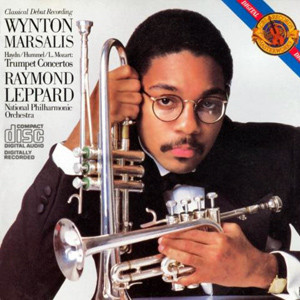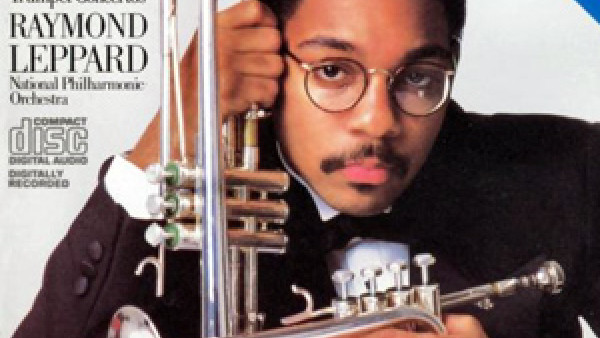Wynton Marsalis: Classics From a Tradition of Jazz
NEW ORLEANS jazz trumpeter Al Hirt used to perform the Haydn Trumpet Concerto with symphony orchestras, and even recorded it with Arthur Fiedler and the Boston Pops for RCA, though his recording is gone from the active catalogue now. Another New Orleans jazzman, Wynton Marsalis, who was 6 years old when he got his first trumpet—from Hirt—recorded the Haydn Concerto recently, and his version is likely to remain a classic for decades.
The 22-year-old Marsalis, who will perform at the Kennedy Center with his jazz quintet this Saturday night, is a member of a family of prominent jazz musicians. He formed his quintet about a year ago. Although he received that first trumpet when he was 6, he didn’t begin to play in earnest until he was 12. Within two years, however, he was performing as soloist with symphony orchestras and jazz groups; he studied at Juilliard, and at 17 he performed at Tanglewood, where he was named the outstanding brass player at the Berkshire Music Center. After making several jazz recordings, he has begun his “classical” discography with a record on which he performs concertos by Hummel, Leopold Mozart and Haydn, with the National Philharmonic under Raymond Leppard (CBS digital IM 37846; cassette IMT-37846).
The tone is big and bright, the phrasing is stylish, and Marsalis’ cadenzas in the Haydn and Mozart concertos are stunning. With Leppard on the podium, the orchestral contribution is, of course, first-rate, and so is the vivid, well-balanced sound. Highly recommended.
From the new French label Cybelia comes an unexpected but quite welcome digital recording of two concerted works by Darius Milhaud that apparently have not been recorded before—his Clarinet Concerto, with Maurice Gabai as soloist, and Suite for Violin and Orchestra, with Eric Alberti. Alan Lombard conducts an ensemble of players drawn mostly from the orchestra of the Paris Ope’ra (CY 703).
The Clarinet Concerto was composed in 1941 for Benny Goodman, but Goodman did not perform it and it has had very little exposure. It is an ingratiating work, in four movements, and very well served here. So is the violin Suite, composed two years later on nautical themes (its three brief movements are Gigues, Sailor’s Song and Hornpipes). One must wonder how music so attractive can have been so thoroughly unknown for four decades, and be grateful to Cybelia for putting it into circulation now.
There is much else worth investigating in this label’s series of 20th-century French music, which includes a complete survey of Milhaud’s string quartets (played by the Arcana Quartet) as well as chamber music and concertos by Jean Franc,aix, Andre’ Jolivet, Florent Schmitt, Aubert Lemeland, Georges Migot, Georges Hugon, Roussel, Ravel, et al.
Back on more familiar ground, there are two recent releases of the Bach violin concertos—No. 1 in A minor and No. 2 in E major for solo violin, and the D minor Concerto for two violins. Anne-Sophie Mutter plays them, with Salvatore Accardo as her partner in the Double Concerto and also as conductor of the English Chamber Orchestra on Angel digital DS-37989; Jaap Schro der plays them, with Christopher Hogwood conducting the Academy of Ancient Music and with Christopher Hirons as co-soloist, on L’Oiseau-Lyre digital DSDL 702.
Both of these are exceptionally beautiful. Schro der, Hogwood & Co. use “authentic instruments,” and listeners familiar with their other recordings need not be told how stylish, invigorating and persuasive this team is in 18th-century music. The side layout, though, as on nearly every other disc of these concertos, is one of those awful “sandwich” affairs, in this case with the great E-major Concerto interrupted for turnover after its first movement.
Angel, to its credit, has avoided this, giving all of Side 1 to the E major and fitting the other two concertos snugly on Side 2. Neither Mutter nor Accardo nor the members of the ECO may be using gut strings or a curved bow, but the playing is appropriately vigorous in the outer movements, caressing in the inner ones and luminous in tone throughout. No one is likely to be less than delighted with either of these fine discs.
by Richard Freed
Source: Washington Post


